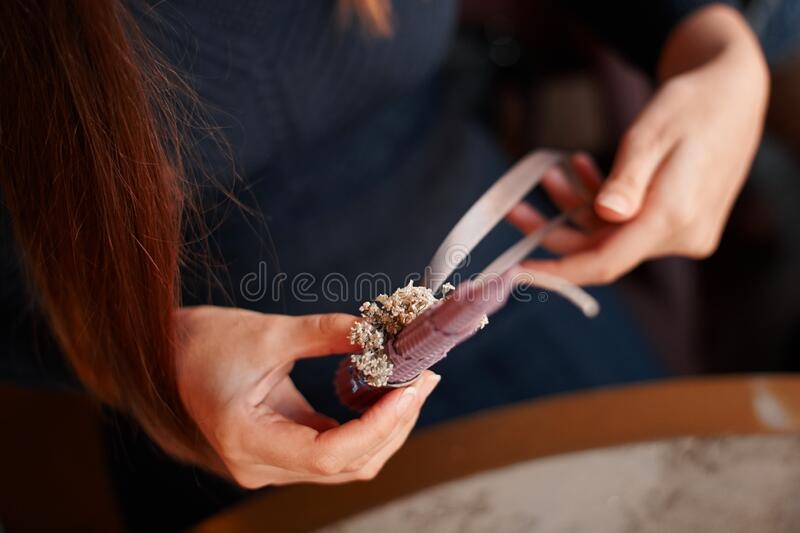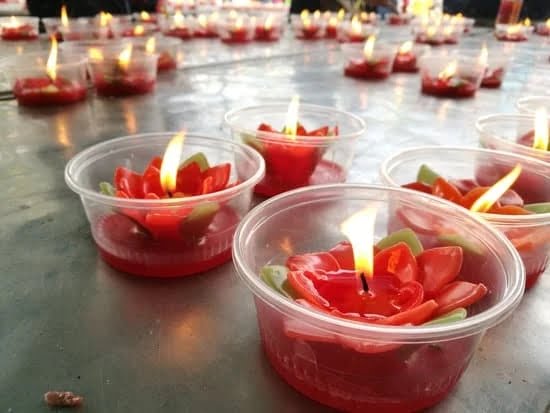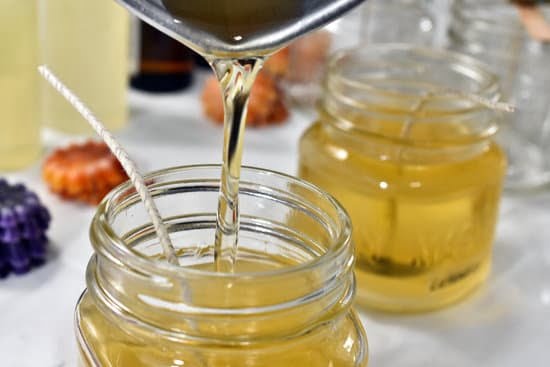When it comes to creating candles, the choice of oils plays a crucial role in determining the final outcome. The
Essential oils are derived from natural plant sources, offering a pure and authentic aroma to your candles. On the other hand, fragrance oils provide a wide range of scents that may not be achievable with essential oils alone. Understanding the differences between these two types of oils will help you make informed decisions when crafting your candles.
In addition to choosing between essential oils and fragrance oils, selecting the right base oil is equally important. Whether you prefer soy wax for its eco-friendly properties, beeswax for its natural elegance, or paraffin wax for its affordability and accessibility, each base oil will interact differently with your chosen scents to create unique candles.
Types of Oils for Candle Making
When it comes to choosing the best oils for candle making, one of the main decisions you’ll need to make is between essential oils and fragrance oils. Essential oils are natural, concentrated liquids extracted from plants through methods like distillation or cold pressing.
They offer various therapeutic benefits and can provide a more natural scent to your candles. On the other hand, fragrance oils are synthetic or artificially created scents that can replicate a wide range of aromas, from floral to fruity to bakery-inspired.
While both essential oils and fragrance oils have their benefits, there are some key differences to consider. Essential oils may be preferred for those looking for all-natural options, as they come directly from plants and often have aromatherapy benefits.
However, they can be more expensive than fragrance oils and may not always provide as strong or long-lasting scents in candles. Fragrance oils, on the other hand, offer a wider variety of scents at a lower cost, making them popular choices for candle makers looking for specific or unique fragrances.
In choosing between essential oils and fragrance oils for your candle making projects, consider factors such as desired scent intensity, budget constraints, and any potential therapeutic benefits you may want from your candles. Experimenting with different combinations of these two types of oils can also help you create custom blends that suit your style and preferences. Ultimately, the best oils to use for candle making will depend on your personal preferences and the goals you have for your finished products.
| Essential Oils | Fragrance Oils |
|---|---|
| Natural origin from plants | Synthetic or artificial scents |
| Potential therapeutic benefits | Wide variety of scents available |
Choosing the Right Base Oil
When it comes to candle making, choosing the right base oil is essential to ensuring a successful end product. The type of wax you select will impact not only the quality of your candles but also their burn time and fragrance throw. There are several options available in the market, with soy wax, beeswax, and paraffin wax being among the most popular choices.
Soy Wax
Soy wax is a natural and renewable resource that is derived from soybean oil. It is known for its clean burning properties and ability to hold fragrance well. Soy wax candles tend to have a longer burn time compared to other waxes and produce minimal soot. Additionally, soy wax is biodegradable, making it an environmentally friendly option for candle makers.
Beeswax
Beeswax has been used for centuries in candle making due to its sweet honey scent and natural golden color. Beeswax candles have a beautiful appearance and emit a warm glow when lit. They also have a long burn time and release negative ions into the air, which can help purify the atmosphere. However, beeswax can be more expensive than other waxes and may require special handling due to its high melting point.
Paraffin Wax
Paraffin wax is a byproduct of petroleum refining and is one of the most commonly used waxes in commercial candle production. It is known for its excellent scent throw and ability to hold color well, making it ideal for creating vibrant candles with strong fragrances. Paraffin wax candles tend to have a shorter burn time compared to soy or beeswax candles but are often more affordable. However, some people prefer to avoid paraffin wax due to its petroleum origins.
Top Essential Oils for Candle Making
Essential oils play a crucial role in candle making, as they are responsible for the scent and therapeutic properties of the final product. When it comes to choosing the best oils to use for candle making, certain essential oils stand out for their popularity and effectiveness.
Lavender essential oil is a top choice for many candle makers due to its calming and soothing properties, making it perfect for relaxation and stress relief. Eucalyptus essential oil is another favorite, known for its refreshing and invigorating aroma that can help clear the mind and promote respiratory health.
Citrus essential oils, such as lemon, orange, and grapefruit, are also highly sought after in candle making for their uplifting and energizing scents. These oils can help create a bright and cheerful atmosphere in any space.
Additionally, other popular essential oils like peppermint, rosemary, and geranium offer a wide range of therapeutic benefits that cater to different preferences and needs. By blending these essential oils together or with fragrance oils, candle makers can create unique and personalized scents that enhance the overall candle-making experience.
In selecting the best oils for candle making projects, it’s important to ensure that they are high-quality, pure essential oils free from synthetic additives or fillers. Quality oils not only produce a more fragrant candle but also provide potential aromatherapy benefits.
For those new to candle making or experimenting with different scents, starting with small batches using various essential oil combinations can help determine personal preferences before committing to larger quantities. By understanding the distinct characteristics of each essential oil and how they interact with one another, candle makers can unleash their creativity and craft candles that delight the senses.
| Essential Oil | Therapeutic Benefits |
|---|---|
| Lavender | Calming and soothing properties |
| Eucalyptus | Refreshing and invigorating aroma; promotes respiratory health |
| Citrus (lemon, orange, grapefruit) | Uplifting and energizing scents; creates a bright atmosphere |
Fragrance Oils for Candle Making
When it comes to candle making, selecting the right fragrance oils can make a significant difference in the final product. Whether you prefer classic scents like vanilla and rose or more exotic blends, there are endless possibilities to explore. Below are some popular fragrance oils that you can consider incorporating into your candle making projects:
- Vanilla: A timeless favorite, vanilla fragrance oil adds a warm and comforting scent to candles. It is versatile and pairs well with other fragrances like lavender or citrus.
- Sandalwood: Known for its woody and earthy aroma, sandalwood fragrance oil is perfect for creating a calming and grounding atmosphere in any space.
- Rose: For those who enjoy floral scents, rose fragrance oil offers a delicate and romantic aroma that can enhance the ambiance of any room.
- Exotic Blends: If you’re feeling adventurous, consider experimenting with exotic blends such as jasmine and patchouli or amber and musk to create unique and captivating scents for your candles.
When using fragrance oils in candle making, it’s essential to follow proper guidelines to achieve the desired results. Remember that different oils have varying strengths, so it’s crucial to measure them accurately when adding them to your wax mixture.
Additionally, be mindful of potential allergic reactions that certain fragrances may trigger in sensitive individuals. By selecting high-quality fragrance oils from reputable sources, you can ensure that your candles not only smell great but also burn safely and cleanly.
Mixing and Blending Oils
When it comes to candle making, one of the most exciting aspects is creating unique scents by mixing and blending different oils. Whether you are using essential oils or fragrance oils, the possibilities are endless for crafting candles that cater to your personal preferences or customers’ tastes. Understanding how to effectively mix and blend oils can elevate your candle-making experience to a whole new level.
One important tip for creating unique scents is to start with a clear vision of the final aroma you want to achieve. Consider the mood or atmosphere you want your candle to evoke and choose oils that complement each other in achieving that goal. For example, if you are aiming for a relaxing ambiance, combining lavender and chamomile essential oils can create a soothing blend ideal for unwinding after a stressful day.
Experimentation is key when it comes to mixing and blending oils for candle making. Don’t be afraid to try out different combinations and ratios to find the perfect scent profile that resonates with you. Additionally, consider using a fragrance wheel as a guide to understand how different notes interact with each other – this can help you create well-balanced fragrances that appeal to a wide range of preferences.
Another important aspect to keep in mind when mixing and blending oils is to record your recipes and measurements carefully. This way, if you come across a winning combination, you can easily replicate it in future batches.
Additionally, take note of any adjustments you make along the way so that you can learn from your experiments and continue improving your scent blending skills. By following these tips and staying open to creativity, you can discover the best oils to use for candle making that truly reflect your personal style or brand identity.
Safety Precautions When Working With Oils in Candle Making
Importance of Safety Precautions
When working with oils in candle making, it is crucial to prioritize safety to prevent accidents and ensure a smooth crafting process. Oils are flammable substances that can pose risks if not handled properly. Ensuring the correct handling, storage, and usage of oils is essential to maintain a safe environment during candle making.
It is important to be aware of potential hazards associated with oils, such as skin irritation or allergic reactions when in direct contact with certain oils. Additionally, proper ventilation is key when working with oils to minimize inhalation of potentially harmful fumes. By following safety precautions diligently, you can create candles without compromising your well-being.
Protective Measures
Before starting your candle-making project, consider wearing appropriate protective gear such as gloves and goggles to shield your skin and eyes from direct contact with oils. In case of accidental spills or splashes, have a clean-up kit ready with absorbent materials to contain and clean up any spilled oil promptly.
Furthermore, ensure that your work area is free from any potential fire hazards and always have a fire extinguisher nearby as an extra precaution. When melting oils for candle making, use designated equipment such as double boilers or wax melters specifically designed for this purpose to prevent accidents caused by overheating or spilling hot oil.
Clean-Up Procedures
After completing your candle-making project, it’s important to clean up your workspace thoroughly to avoid any lingering oil residues that could pose hazards in the future. Dispose of any used oils properly according to local regulations and store unused oils securely in sealed containers away from heat sources and direct sunlight.
By following these safety precautions when working with oils in candle making, you can enjoy the creative process while ensuring a safe and enjoyable crafting experience for yourself and others involved in the project. Remember that prioritizing safety is key to creating beautiful candles without compromising on health and well-being.
Best Practices for Storing Oils to Maintain Their Quality
When it comes to candle making, the quality of the oils you use plays a crucial role in determining the final outcome of your creations. Proper storage of these oils is essential to ensure that they maintain their potency and aroma. Here are some best practices for storing oils to maintain their quality:
- Store oils in a cool, dark place: Exposure to heat and light can accelerate the oxidation process of oils, leading to a reduction in their fragrance and effectiveness. It is recommended to store oils in a cool, dark place away from direct sunlight.
- Use airtight containers: Oils are volatile compounds that can easily evaporate when exposed to air. To prevent this from happening, store your oils in airtight containers to minimize air exposure and maintain their integrity.
- Avoid temperature fluctuations: Fluctuations in temperature can cause oils to expand and contract, potentially affecting their composition. To avoid this, store your oils in a consistent temperature-controlled environment.
Proper storage of essential and fragrance oils is essential for preserving their quality and ensuring optimal results in your candle making projects. By following these best practices, you can prolong the shelf life of your oils and continue creating wonderful scented candles for yourself or as thoughtful gifts for others.
Ultimately, taking care of the oils used in candle making is just as important as selecting the right ones for your projects. By implementing these storage practices, you can be confident that the oils will retain their potency and aroma, allowing you to create beautifully scented candles time after time.
Conclusion
In conclusion, the key to a successful candle making project lies in choosing and using the best oils for the job. Whether you opt for essential oils or fragrance oils, selecting high-quality oils that complement your chosen wax base is crucial. Essential oils like lavender, eucalyptus, and citrus offer natural scents that can uplift and invigorate, while fragrance oils like vanilla, sandalwood, and rose provide a wide range of options for creating unique blends.
When it comes to choosing the right base oil, consider factors such as burn time, scent throw, and eco-friendliness. Soy wax is known for its clean burn and excellent scent throw, while beeswax offers a natural honey-like aroma.
Paraffin wax, on the other hand, provides a strong scent throw but is not as eco-friendly as soy or beeswax. By understanding the properties of each base oil and how they interact with different fragrances, you can create candles that not only smell amazing but also burn cleanly and evenly.
Remember to experiment with mixing and blending oils to create custom scents that reflect your personal style and preferences. Keep safety precautions in mind when working with oils in candle making, such as using proper ventilation and avoiding direct contact with skin or eyes.
By following best practices for storing oils properly to maintain their quality, you can ensure that your candle making projects are a success from start to finish. Choose wisely and let your creativity shine through in every candle you make.
Frequently Asked Questions
What Kind of Oils Do You Use for Candle Making?
When it comes to candle making, the type of oils used can greatly impact the quality of the final product. Commonly used oils include soybean oil, coconut oil, palm oil, and beeswax. Each type of oil has its own unique properties that can affect the scent throw, burn time, and overall performance of the candle.
What Is the Best Carrier Oil for Candles?
Choosing the best carrier oil for candles depends on personal preference and desired outcome. Some popular options include soy wax, coconut oil, and apricot kernel oil. These oils can help with even burning, scent diffusion, and overall candle performance. It’s essential to consider factors like burn time and scent throw when selecting a carrier oil for your candles.
What Are the Best Essential Oil Blends for Candles?
When creating essential oil blends for candles, it’s essential to consider both the fragrance notes and the therapeutic benefits of each oil. Some popular combinations include lavender and bergamot for a calming effect, peppermint and eucalyptus for a refreshing scent, or orange and cinnamon for a warm and inviting aroma.
Experimenting with different essential oils to create unique blends is part of the fun in candle making.

Welcome to my candle making blog! In this blog, I will be sharing my tips and tricks for making candles. I will also be sharing some of my favorite recipes.





